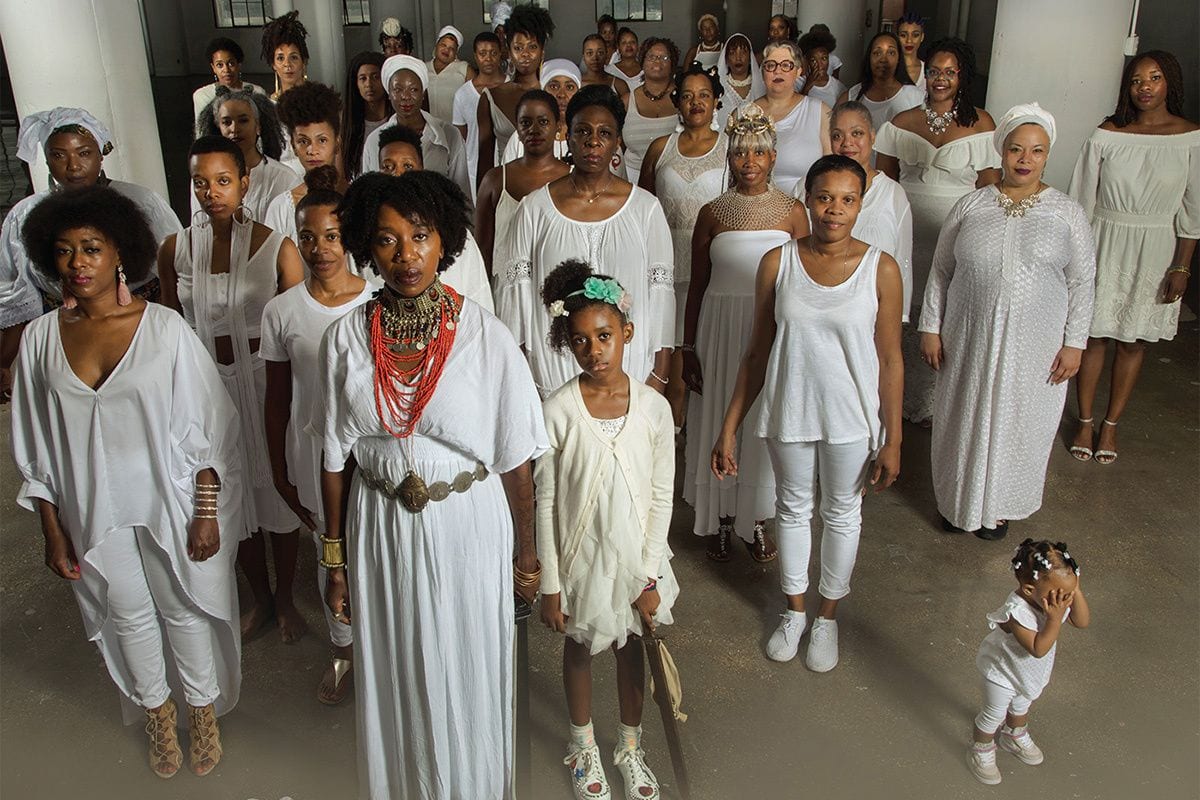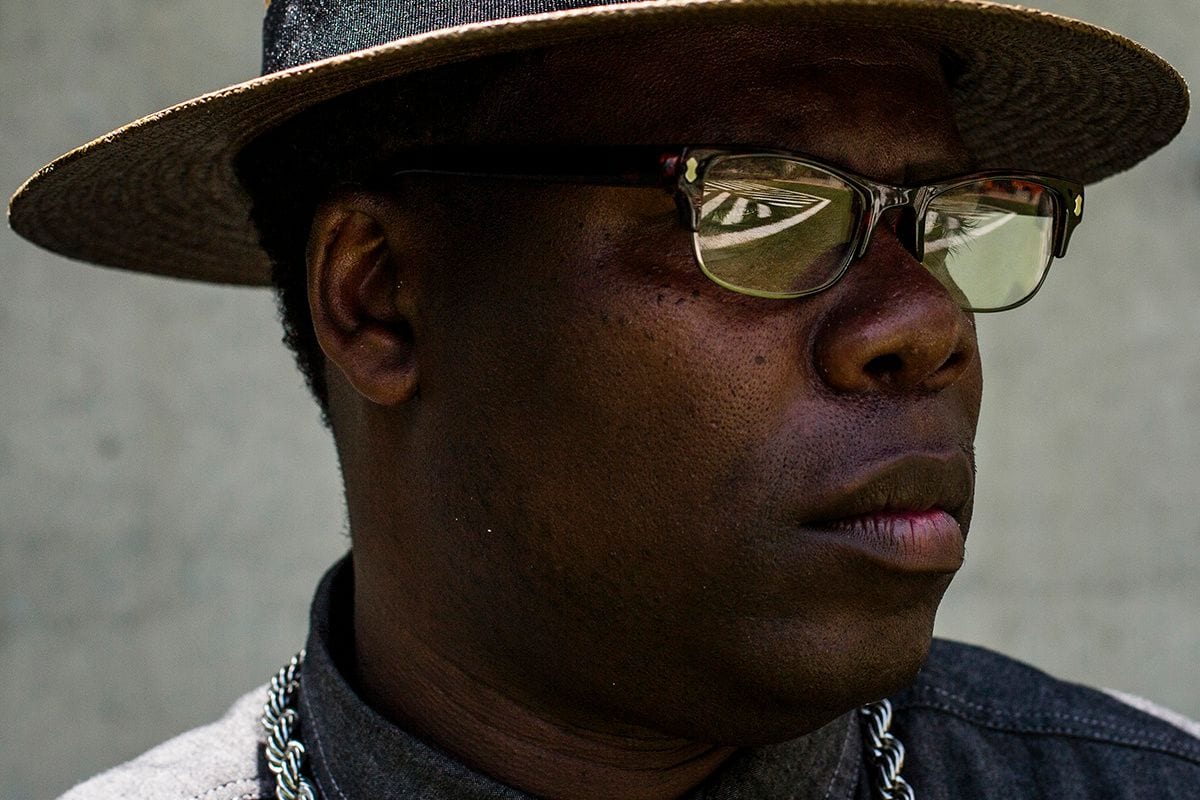

Chicago poet and recording artist Avery R. Young has had a busy few months: in June, his poetry collection, neckbone: visual verses (Northwestern University Press). This was followed by the recent release of his new album, tubman. (FPE Records) an incendiary collection of songs grounded in classic 1970s-era funk and soul but reflecting the spirit of “perseverance and resistance” Young recognizes in himself, and feels was embodied in abolitionist and political activist Harriet Tubman.
While the album and book are separate entities, each complements the other. Young describes
tubman. as a “soundtrack” to neckbone.
Young connected with
PopMatters via email to convey his creative process, tubman., neckbone, and the movement to depict Harriet Tubman on the US $20 bill, which Trump stalled.
Please tell me about your recently published book,
neckbone: visual verses, and how it is related to your new album, tubman., which was recorded with your band, De Deacon Board?
My debut collection of poems,
neckbone: visual verses, is a collection of visual and traditional text that explore various moments within my personal and cultural narrative that informs the thought and intention behind the art I make. The album tubman. works as soundtrack to neckbone. The songs extend various poems and themes interrogated throughout the book. For example, “lady day on soul-train”, comes from the series of visual text that examines the life and times of Billie Holiday. Inside neckbone, the poem imagines Mama Billie’s inner thoughts as she is performing on the show Soul Train, and on tubman., the song is me imagining what that grooves like.
“Sometimes sound is the ink. Other times chicken grease and gorilla tape is the think.”
What inspired you to name the new album tubman.?
Once I assembled the work in neckbone, the words “perseverance” and “resistance” resonated in my spirit. The work in the book really deals with a black cis-male narrative, I wanted to pay homage to black women, and since Mama Harriet exemplifies the words perseverance and resistance in the best(est) of ways, I decided on the name tubman.
Also, Mama Harriet had a mission that was intentional and very specific. The album has a very specific and intentional mission. So therefore, tubman.
Finally, Mama Harriet holds so much space in my heart and soul because her work was not just removing herself from a space of where there wasn’t a system of bondage, but she came back and got others. A whole bunch of others.
How does the life and work of Harriet Tubman make its way into the lyrical content of the album?
The assignment of the lyrical content of this album was not to reflect the life and work of Harriet Tubman, because this is not an album of songs about her. The lyrical content of the album is derived from the work inside the book neckbone.
The lyrics are rooted in folklore, bible verses and the desire to present liberation.This rootwork, I believe, coincides with the work of Harriet Tubman, but naming the album tubman. is more symbolic of the spirit and space in which the album was made.
My art and definitely this album was made in such a space of liberation. I didn’t have anyone pressuring me to create work that would be anything other than music. This record is my coming back to bring others to that space where a system of bondage exists. This album is a mothership called tubman.
How would you describe the music on tubman.?
I call the music I make “sousefunk”. It’s music that contains everything from the roota to the toota. The music on this album merges gospel, rock, blues, soul and other genres to create musical sermons meant to make people move, feel and think. I am a person who believes there are other people who are like me that hear music and think at the same time. So I make music for us.
I think it is an easier way to describe the it as the music that you may have encountered on one of those deep-funk or deep-cut and rare grove compilations. But instead of that music being made in the past, I have constructed it inside a land called RIGHT NOW!!!
You work within several different art forms – music, poetry, theater, songwriting, and more. Can you describe how your various projects play off each other?
All the work/projects play off each other or work with each other because all the work I do investigates the glitter and grime of black American life through poetry. I consider it all poetry. Or I am constantly thinking I am creating a poem. The work then becomes imagining the various spaces in which a poem can exist and the ways in which I can use various materials as ink.
Sometimes sound is the ink. Other times chicken grease and gorilla tape is the think. For me, poetry has to be bigger than black letters on white pages, so I may use more than that. I totally appreciate page and language, but I am definitely not bound by it. Neither are we (black folk).
How do you think Harriet Tubman’s life story and work resonates in today’s world?
I say all the time, Harriet did not run to freedom. Harriet ran because she was free already.
Harriet was a real revolutionary. A real one. Not the kind that sit behind computer screen and trauma-porn themselves by watching Youtube videos until they come up with a clever hashtag. Mama Harriet was a real revolutionary in the ways in which she insisted and then maneuvered to place her body in a space that was aligned with what her spirit and mind knew of itself.
Mama Harriet’s work is foundation to many folk whose work in insisting and maneuvering themselves to existing inside spaces where all parts of them are free to be is, unfortunately, considered as against government and regime. Folk really want to be romantic about Harriet’s work, but Mama Harriet was dealing in guerilla warfare. She was a fugitive. She was wanted. When you start talking about women like Mama Assata Shakur [of the Black Liberation Army], then we talking the work of Harriet Tubman.
There are a lotta people that work, but there is a whole bunch more who do not. I don’t think the world understands the depth of her work, her whole narrative. So much that woman went through personally, spiritually, politically and physically to secure her right to walk in earth and be free at the same time. So much.

How do you feel about the attempts to have Harriet Tubman’s portrait placed on the US $20 bill?
When I think about this idea of Mama Harriet’s face on the $20 bill, I feel a sermon rising in my soul! I will say this: To put her face on a $20 bill and still keep the face of slave owners and racists on all the others, in no way reconciles the relationship and the systematic oppression that keeps this country afloat. At no time in her life was she able to sit at a table with Lincoln or Grant and not be carried off in handcuffs.
If you want to call it a way to honor her, fine. But as for me and my house, I say it’s preposterous.
I truly understand why folk say it’s an honor and/or it’s a step toward reconciliation. But I have to say I rock with Mama Nina Simone when I say those methods and/or steps are “too slow!”
If you want to put Mama Harriet’s face on something, put it on a reparations check!
Any final thoughts you’d like to add?
Yes, the function and intent of the album is to extend the work featured in neckbone, but the two works are interdependent of each other. The books presents my poetic art in one way and tubman. presents my poetic art in another.
There are songs like “lead in de wattah” that can function in movies about Flint and/or environmental racism, and there are songs like “tchala” that I can hear in a car commercial.
I am very proud of the project. Like the work of Harriet, it took a network of people to realize all my thoughts of basslines and strings riffs into a tangible product.
I am a poet. Not a musician at all. My music starts in my mind and I hum/beatboxed to de deacon board and all the other guest musicians on this record and they played it. I wrote, arranged, produced everything.


![Call for Papers: All Things Reconsidered [MUSIC] May-August 2024](https://www.popmatters.com/wp-content/uploads/2024/04/all-things-reconsidered-call-music-may-2024-720x380.jpg)



